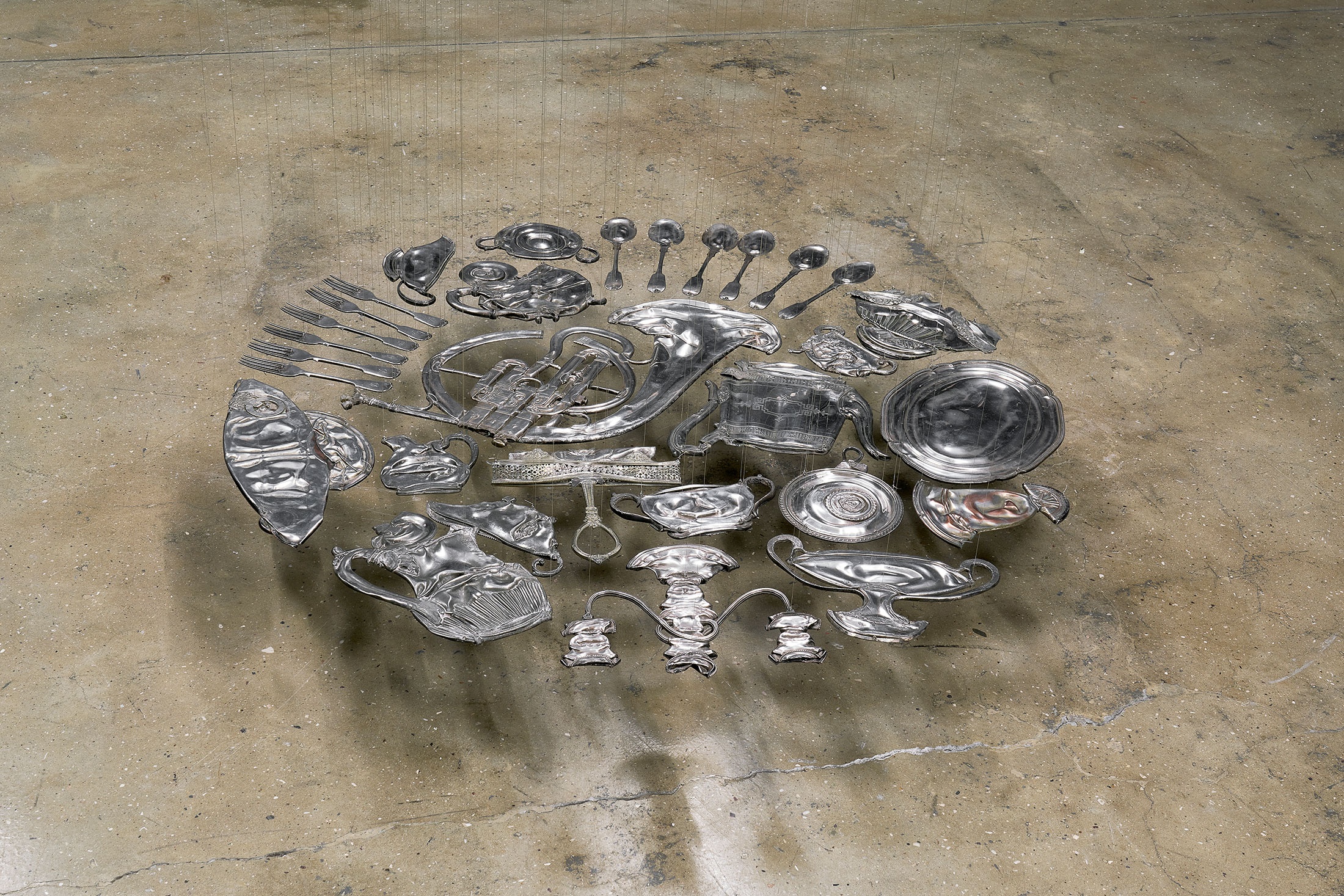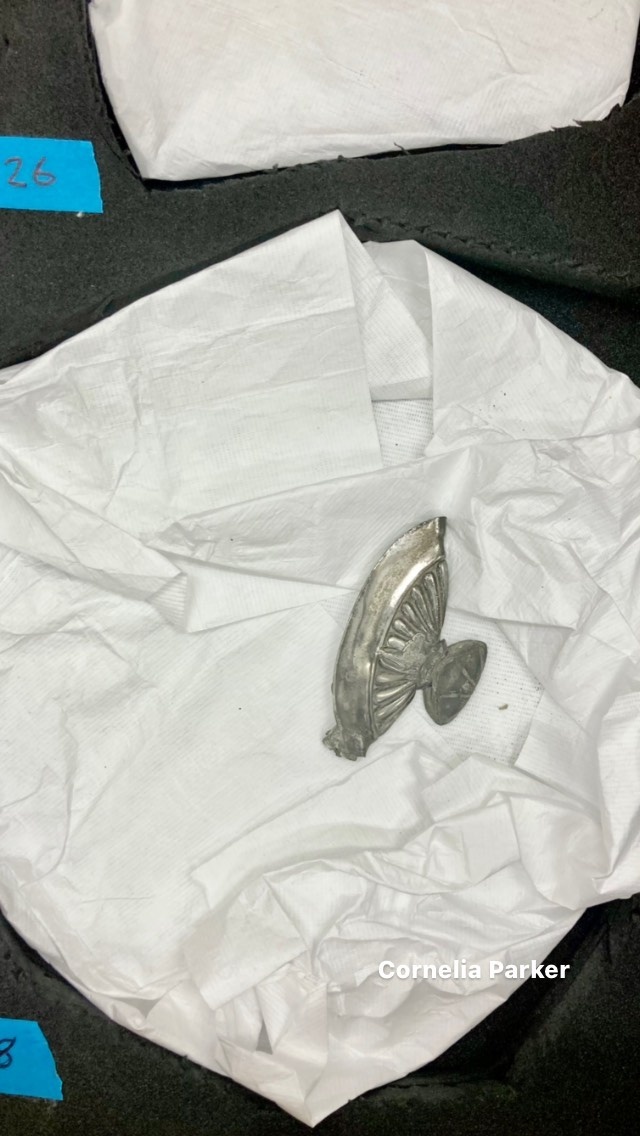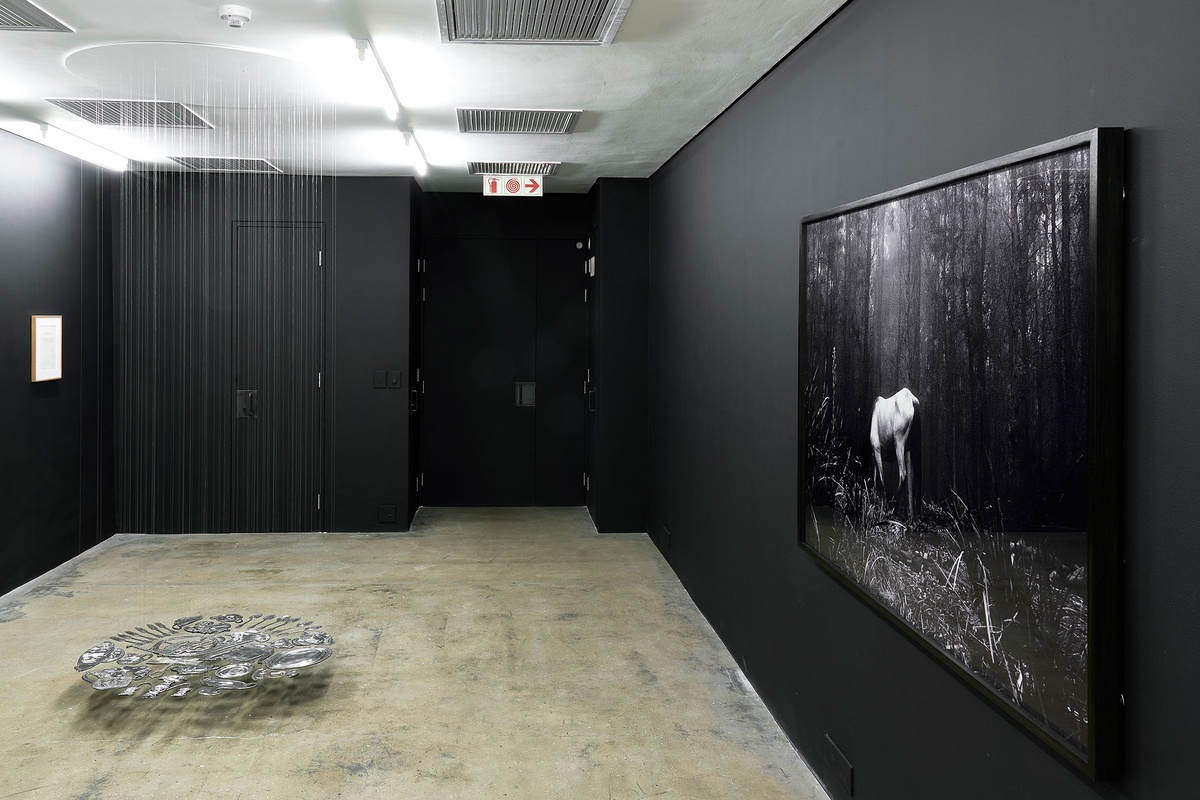Cornelia Parker

Thirty Pieces of Silver (Exhaled) French Horn comprises thirty silver objects – flattened by a steamroller – suspended together in a circular arrangement; spoons, gravy boats, a candlestick, a teapot, the titular horn. First exhibited in a larger installation of thirty such floating forms, the work’s title alludes to the apostle Judas Iscariot, who betrayed Christ in return for thirty pieces of silver, and the accompanying themes of money, death and resurrection. In this work, once-valued keepsakes, sourced from junk shops, antique markets and car-boot sales, lend themselves to a formal inquiry into materiality and anti-matter. For all the delicacy of the installation – the careful suspension of the objects, set floating on thin threads – a frisson of danger remains, the violence of their flattening embodied in their altered forms. The work revels in this tension: that of its levitating lyricism and the muscular force of its making.
“Silver is commemorative, the objects are landmarks in people’s lives. I wanted to change their meaning, their visibility, their worth… In the gallery the ruined objects are ghostly levitating just above the floor, waiting to be reassessed in the light of their transformation” (Cornelia Parker, 1990).
b.1956, Cheshire
An alchemist of matter, Cornelia Parker transmutes found objects into novel forms. Her practice is shaped by two competing impulses; to preserve and to destroy. Subjecting her mediums to a transformational (and more often physical) force, the artist at once denies them their previous symbolic lives and lends them new import. A garden shed exploded, seized cocaine burnt to benign ashes, pornographic VHS tapes dissolved in acid, a church struck by lightning – this last by accident, not at the artist’s request. A poet of disrupted forms, she favours those things shaped by violence and accident; everyday objects made profound by their provenance. Debris or relic – or something else besides – Parker’s accumulated objects become metonyms for our psychological shadows.


